Showing Spotlights 753 - 760 of 2879 in category All (newest first):
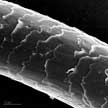 Scientists have discovered that the hierarchical micro- and nanostructures of human hair can be turned into hierarchical micro- and nanoparticles with a simple top-down procedure and be used as a novel type of biomaterial for medical applications. This strategy of preparing biomaterials from abundant human hair might provide a potent tool for producing autogenous materials from patients themselves to overcome the drawbacks of synthetic materials.
Scientists have discovered that the hierarchical micro- and nanostructures of human hair can be turned into hierarchical micro- and nanoparticles with a simple top-down procedure and be used as a novel type of biomaterial for medical applications. This strategy of preparing biomaterials from abundant human hair might provide a potent tool for producing autogenous materials from patients themselves to overcome the drawbacks of synthetic materials.
May 30th, 2018
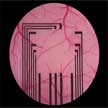 Although advances in optical technologies such as multi-photon microscopy and optogenetics have revolutionized researchers' ability to record and manipulate neuronal activity, integration of optical modalities with electrical recordings is challenging due to generation of light-induced artifacts. In new work, scientists report a transparent graphene microelectrode neural implant that eliminates light-induced artifacts to enable crosstalk-free integration of 2-photon microscopy, optogenetic stimulation, and cortical recordings in the same in vivo experiment.
Although advances in optical technologies such as multi-photon microscopy and optogenetics have revolutionized researchers' ability to record and manipulate neuronal activity, integration of optical modalities with electrical recordings is challenging due to generation of light-induced artifacts. In new work, scientists report a transparent graphene microelectrode neural implant that eliminates light-induced artifacts to enable crosstalk-free integration of 2-photon microscopy, optogenetic stimulation, and cortical recordings in the same in vivo experiment.
May 24th, 2018
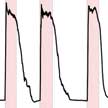 Very different from piezoelectric and other energy harvesting technologies, new research shows that water vapor or moisture expand the range of natural phenomena that can be used to generate electric power. Researchers demonstrate that moisture, a vast kind of resource existing ubiquitously on earth and in biological organisms, can be exploited as a novel harvestable energy to generate electricity. Although some device configurations previously have been demonstrated to directly generate electricity from moisture, these generators have not been shown yet to be flexible and to be used as self-powered wearable devices.
Very different from piezoelectric and other energy harvesting technologies, new research shows that water vapor or moisture expand the range of natural phenomena that can be used to generate electric power. Researchers demonstrate that moisture, a vast kind of resource existing ubiquitously on earth and in biological organisms, can be exploited as a novel harvestable energy to generate electricity. Although some device configurations previously have been demonstrated to directly generate electricity from moisture, these generators have not been shown yet to be flexible and to be used as self-powered wearable devices.
May 23rd, 2018
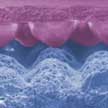 Mimicking the exciting skin structure and function, researchers have designed hierarchical nanoporous and interlocked micro ridge structured polymers with gradient stiffness. The gradient elastic modulus of interlocked and micro ridge structured polymers effectively transfers the external stress and induces the large frictional contact between two polymeric layers, which facilitates their use in self-powered triboelectric sensors. Furthermore, the additional nanoporous structures in the micro ridge structured polymers lead to the effective variation of both volume and gap distance between opposing surfaces without the need of bulky spacers, resulting in ultrathin and flexible triboelectric sensors for applications in wearable electronics.
Mimicking the exciting skin structure and function, researchers have designed hierarchical nanoporous and interlocked micro ridge structured polymers with gradient stiffness. The gradient elastic modulus of interlocked and micro ridge structured polymers effectively transfers the external stress and induces the large frictional contact between two polymeric layers, which facilitates their use in self-powered triboelectric sensors. Furthermore, the additional nanoporous structures in the micro ridge structured polymers lead to the effective variation of both volume and gap distance between opposing surfaces without the need of bulky spacers, resulting in ultrathin and flexible triboelectric sensors for applications in wearable electronics.
May 22nd, 2018
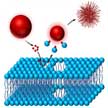 Significant bioaccumulation of nanomaterials in the liver via inadvertent or systemic exposure, as well as the lack of a mechanistic knowledge that describes the hazard potential of metal oxide nanoparticles in liver cells, prompted researchers to comprehensively explore metal oxide nanoparticle interactions with major liver cells, including phagocytic cells and hepatocytes. They now report on the assessment of the toxicity of 29 metal oxide nanoparticles in liver macrophages (Kupffer cells) and hepatocytes.
Significant bioaccumulation of nanomaterials in the liver via inadvertent or systemic exposure, as well as the lack of a mechanistic knowledge that describes the hazard potential of metal oxide nanoparticles in liver cells, prompted researchers to comprehensively explore metal oxide nanoparticle interactions with major liver cells, including phagocytic cells and hepatocytes. They now report on the assessment of the toxicity of 29 metal oxide nanoparticles in liver macrophages (Kupffer cells) and hepatocytes.
May 18th, 2018
 Most approaches to making artificial structural colors rely on low-throughput fabrication techniques, use expensive noble metal materials, and are limited to microscopic footprints. To address these limitations, an international team of researchers has demonstrated high-throughput fabrication of all-dielectric mesoporous materials with macroscopic footprints and colorimetric signatures spanning the whole gamut of visible colors. Inspired by the butterfly wing coloration, the researchers completely avoided the use of noble metals, and instead realized structural colors in cheap and abundant dielectric materials, which are completely transparent in the bulk form.
Most approaches to making artificial structural colors rely on low-throughput fabrication techniques, use expensive noble metal materials, and are limited to microscopic footprints. To address these limitations, an international team of researchers has demonstrated high-throughput fabrication of all-dielectric mesoporous materials with macroscopic footprints and colorimetric signatures spanning the whole gamut of visible colors. Inspired by the butterfly wing coloration, the researchers completely avoided the use of noble metals, and instead realized structural colors in cheap and abundant dielectric materials, which are completely transparent in the bulk form.
May 11th, 2018
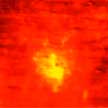 At the nanoscale, materials become exceedingly sensitive to external perturbations. This is quite a relevant factor for wearable and flexible applications, where materials would always bear a certain degree of variable strain/stress. So far it has been very difficult to characterize strain effects in 2D materials, which is crucial to understanding strain-matter interactions. Researchers demonstrate that this limitation can be overcome by using a technique based on Kelvin Probe Microcopy.
At the nanoscale, materials become exceedingly sensitive to external perturbations. This is quite a relevant factor for wearable and flexible applications, where materials would always bear a certain degree of variable strain/stress. So far it has been very difficult to characterize strain effects in 2D materials, which is crucial to understanding strain-matter interactions. Researchers demonstrate that this limitation can be overcome by using a technique based on Kelvin Probe Microcopy.
May 9th, 2018
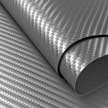 Today, the common engineering solution to manufacture carbon fiber reinforced plastic composite materials is based on cross-plied carbon fibers in a polymer resin requiring high temperature cure. In contrast, researchers now have demonstrated cross-linked graphene sheets that are manufacturable from graphene platelets, which are resin-free, processable at low temperature, and contain less than 10 wt.% additives. This advance provides a universal strategy for converting inexpensive graphene platelets into high performance polymer-free graphene sheets for the development of next-generation lightweight multifunctional materials.
Today, the common engineering solution to manufacture carbon fiber reinforced plastic composite materials is based on cross-plied carbon fibers in a polymer resin requiring high temperature cure. In contrast, researchers now have demonstrated cross-linked graphene sheets that are manufacturable from graphene platelets, which are resin-free, processable at low temperature, and contain less than 10 wt.% additives. This advance provides a universal strategy for converting inexpensive graphene platelets into high performance polymer-free graphene sheets for the development of next-generation lightweight multifunctional materials.
May 8th, 2018
 Scientists have discovered that the hierarchical micro- and nanostructures of human hair can be turned into hierarchical micro- and nanoparticles with a simple top-down procedure and be used as a novel type of biomaterial for medical applications. This strategy of preparing biomaterials from abundant human hair might provide a potent tool for producing autogenous materials from patients themselves to overcome the drawbacks of synthetic materials.
Scientists have discovered that the hierarchical micro- and nanostructures of human hair can be turned into hierarchical micro- and nanoparticles with a simple top-down procedure and be used as a novel type of biomaterial for medical applications. This strategy of preparing biomaterials from abundant human hair might provide a potent tool for producing autogenous materials from patients themselves to overcome the drawbacks of synthetic materials. 
 Subscribe to our Nanotechnology Spotlight feed
Subscribe to our Nanotechnology Spotlight feed





